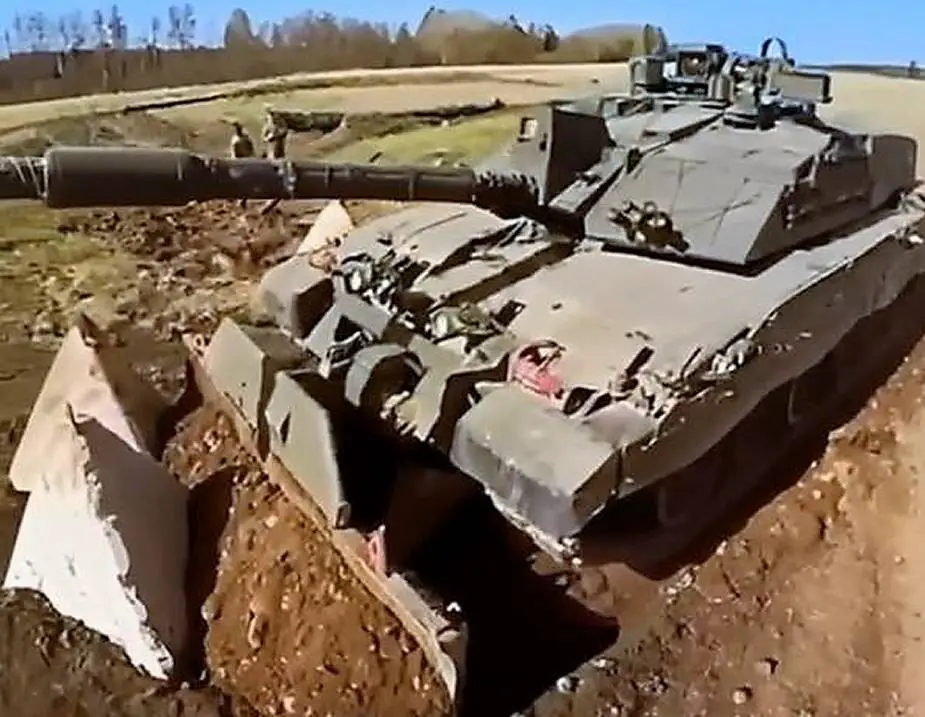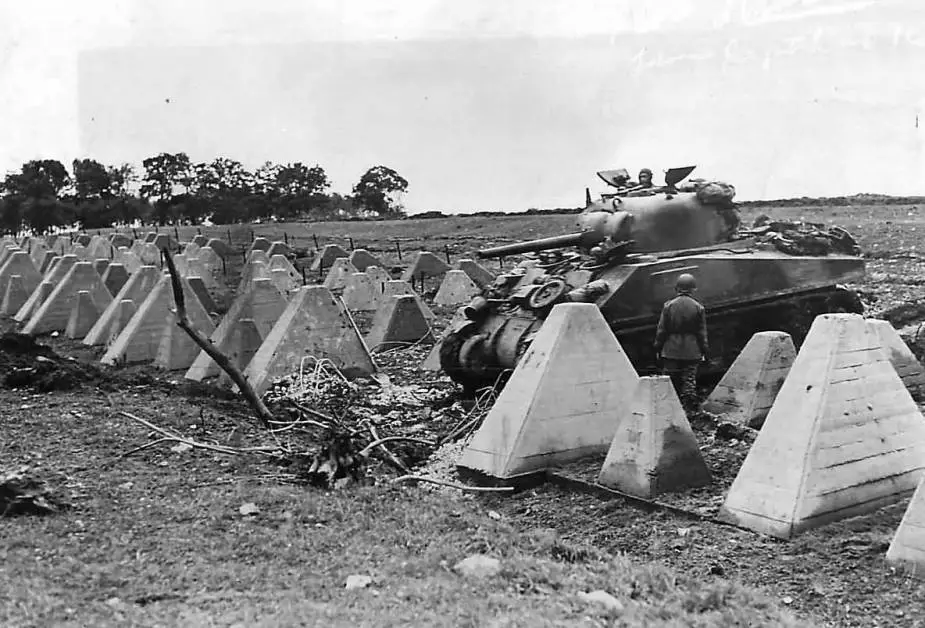- Army
- Conflicts in the world
- Israel - Iran conflict 2025
- Pakistan - India Conflict 2025
- Russia Ukraine War 2022
- Libya conflict day by day
- HAMAS - Israel War 2023
- Operation Serval in Mali French Army
- Sangaris operation Central African Republic
- Sangaris opération militaire République Centreafrique
- Ukraine - Russia conflict
- Syria conflict news
- Defence & Security Industry Technology
- Armies in the world
- Analysis Defense and Security Industry
- Conflicts in the world
- Navy
- Air
Ukrainian Challenger 2 tanks training to level Russian ‘dragon's teeth’ anti-tank obstacles
Topwar.ru reports that Ukrainian Telegram channels, allegedly sponsored by members of the Armed Forces of Ukraine, published a video footage taken at one of the training grounds, in which a British Challenger-2 tank using its engineer blade easily levels an anti-tank ditch with earth and pushes "dragon's teeth" concrete obstacles in it. Russian defense lines are equipped with this type of fortification in some sections of the contact line.
Follow Army Recognition on Google News at this link

Ukrainian Challenger 2 tank training to move Russian dragon’s teeth (Picture source: screenshot of Ukrainian video on Telegram, via Topwar.ru)
Topwar.ru writes that such a way of breaking through the Russian defense line seems very doubtful due to the fact that additional equipment not provided for by the designers, installed on military equipment, significantly reduces its speed and maneuverability, which can become critical in combat conditions in which heavy artillery fire is being conducted, and make the tank an easy target. In addition, judging by the video, the Ukrainian military managed to move only one row of such barriers at their training ground, despite the fact that the Russian defense lines are made of at least two rows of "dragon's teeth". Not only that, these concrete structures are usually linked with steel cables.
Army Recognition comments on this point of view by stating that engineer tanks are only slightly less maneuverable than ‘’combat’’ tanks, speed not being relevant in such obstacle-clearing work. Also, linking dragon’s teeth with steel cables does not prevent these obstacles that are simply laid down on the ground to be easily movable, a single shell accurately fired on top of one of the teeth being probably enough to break the cable network.
Before World War 2, in building their 'Siegfried Line' facing the French 'Ligne Maginot', the Germans inaugurated the use of such concrete anti-tank obstacles but they wisely multiplied the lines and solidly anchored them to buried reinforced concrete foundations, which implies that they could not be simply moved by the Allied engineer tanks and bulldozers when entering Germany in 1944 and 1945. These dragon's teeth lines had to be blown up section by section to clear some gangways, previous bombing raids by the USAAF or RAF having sometimes weakened or severely damaged them. Nowadays, missile strikes, bombing raids with adequate ammunition or accurate heavy artillery pounding would probably be used to reach the same result. Or simply bury the dragon's teeth on the necessary width to manage a crossing. Or lay a folding bridge over them.

An M4 Sherman tank of the 3rd U.S. Armored Division crossing dragon's teeth of the Siegfried Line, September 1944 (Picture source; U.S NARA)


























